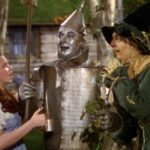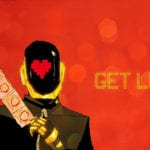 History
History  History
History  Technology
Technology Top 10 Everyday Tech Buzzwords That Hide a Darker Past
 Humans
Humans 10 Everyday Human Behaviors That Are Actually Survival Instincts
 Animals
Animals 10 Animals That Humiliated and Harmed Historical Leaders
 History
History 10 Most Influential Protests in Modern History
 Creepy
Creepy 10 More Representations of Death from Myth, Legend, and Folktale
 Technology
Technology 10 Scientific Breakthroughs of 2025 That’ll Change Everything
 Our World
Our World 10 Ways Icelandic Culture Makes Other Countries Look Boring
 Misconceptions
Misconceptions 10 Common Misconceptions About the Victorian Era
 Mysteries
Mysteries 10 Strange Unexplained Mysteries of 2025
 History
History 10 Things You Didn’t Know About the American National Anthem
 Technology
Technology Top 10 Everyday Tech Buzzwords That Hide a Darker Past
 Humans
Humans 10 Everyday Human Behaviors That Are Actually Survival Instincts
Who's Behind Listverse?

Jamie Frater
Head Editor
Jamie founded Listverse due to an insatiable desire to share fascinating, obscure, and bizarre facts. He has been a guest speaker on numerous national radio and television stations and is a five time published author.
More About Us Animals
Animals 10 Animals That Humiliated and Harmed Historical Leaders
 History
History 10 Most Influential Protests in Modern History
 Creepy
Creepy 10 More Representations of Death from Myth, Legend, and Folktale
 Technology
Technology 10 Scientific Breakthroughs of 2025 That’ll Change Everything
 Our World
Our World 10 Ways Icelandic Culture Makes Other Countries Look Boring
 Misconceptions
Misconceptions 10 Common Misconceptions About the Victorian Era
 Mysteries
Mysteries 10 Strange Unexplained Mysteries of 2025
10 Crazy But Plausible Fan Theories About Your Favorite Movies
A lot of movies are open to interpretation. Sometimes this is due to the director’s vision; other times it’s due to the director’s lack of vision. Even if a movie seems straightforward, that won’t stop dedicated fans from debating things others consider a foregone conclusion.
That leads to the appearances of many fan theories that offer alternative explanations to the actions showcased on screen. They tend to range from the insane and completely impossible to the insane and somewhat plausible. These next ten entries are part of the latter.
10 Jar Jar Was A Sith Lord
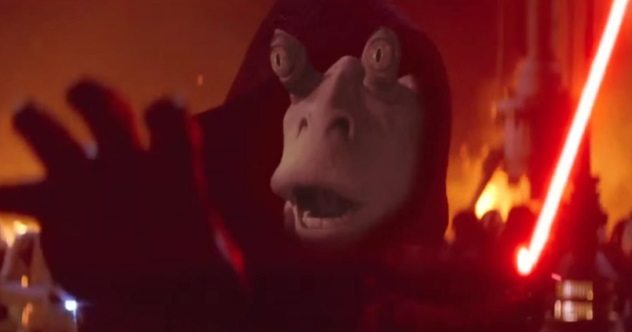
When The Phantom Menace came out in 1999, Star Wars fans were divided in their response to the film but united in their hatred for new character Jar Jar Binks. Intended as comic relief, the bumbling Gungan was met with immediate disdain from critics and the public alike. There’s even a fan version of the movie called The Phantom Edit, which makes several changes to improve the film, including removing almost all Jar Jar scenes.
The character’s poor reception minimized his roles in the subsequent movies to the point of a cameo in Episode III. This has led some to speculate on the original path set out for Jar Jar Binks, including an idea that George Lucas might have had a sinister role in mind for him all along. The theory states that Jar Jar was a Sith Lord in cahoots with Palpatine. He was, in fact, a seasoned warrior well-versed in the use of the Force who used his skills to full effect to appear as an incredibly lucky, bumbling fool.
Fanning the flames was Ahmed Best, the actor who voiced Jar Jar. In 2016, he said that there is some truth to the theory.[1] He even admitted to filming a deleted scene between the emperor and Jar Jar in which the former takes the Gungan into his confidence. There is even hope that this wild theory will be resurrected for the new trilogy and that Jar Jar will be revealed to be Supreme Leader Snoke.
9 ‘James Bond’ Was A Code Name
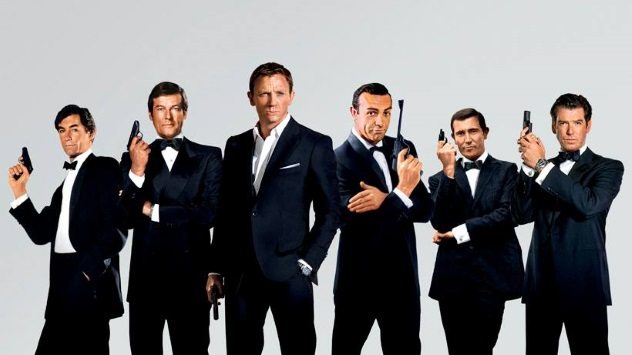
As a franchise that lasted for over 50 years, the James Bond series has seen multiple actors play the iconic role. To maintain continuity, some fans believe that “James Bond” is a code name for several MI6 agents, not the real name of one man played by different actors.
This theory goes all the way back to On Her Majesty’s Secret Service in 1969. It was the only film starring George Lazenby as the second Bond in the Eon series. After a tense fight, he remarks, “This never happened to the other fellow.”[2] Bizarrely, it’s also the movie that provides the strongest evidence against the theory: Tracy Bond. Originally Contessa Teresa di Vicenzo, she was the only Bond girl to actually marry 007, although she is killed toward the end of the movie. Several minor references to her are made throughout the series by different Bonds, suggesting they were all married to the same person.
The clincher supposedly came in Skyfall, where Bond goes to his childhood home and sees his parents’ gravestone. However, this hasn’t stopped the “code name” theory, just adapted it. A new idea states that “James Bond” is, indeed, a code name, but Daniel Craig’s Bond doesn’t know it because he’s being brainwashed by M. This idea also suggests that the film’s main villain, former MI6 agent Raoul Silva, used to be another James Bond. That’s why he refers to himself and Bond as rats being used by M. In this case, the childhood home would simply be a brainwashing facility.
8 Kill Bill Is A Movie Within A Movie Starring Mia Wallace
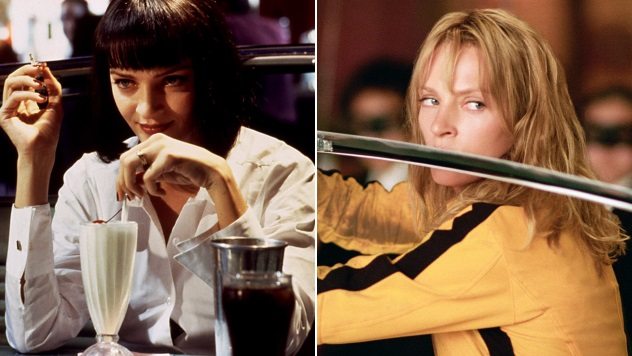
This movie theory is unique in that it was partially corroborated by Quentin Tarantino himself. The director confirmed that all of his movies take place in the same universe, which he described as “realer than real.”[3] However, within that universe, there is a movie sub-universe which includes his more outlandish productions like Kill Bill and From Dusk Till Dawn. As he puts it, when characters from Pulp Fiction go to the cinema, they see Kill Bill.
The theory goes a bit further than that, stating that Mia Wallace, Uma Thurman’s character in Pulp Fiction, played the Bride in Kill Bill. This is all based on her discussion with Vincent Vega at the diner. She said she once filmed a TV pilot called Fox Force Five about an all-women team of secret agents. Besides her character, Raven McCoy, who was “the deadliest woman in the world with a knife,” the team also included a blonde leader, a Japanese martial arts expert, a black demolitions expert, and a French seductress.
The description mostly matches that of the Deadly Viper Assassination Squad from Kill Bill, except that Mia Wallace plays the blonde leader. Since Kill Bill was filmed almost ten years after the events in Pulp Fiction, any differences can be regarded simply as changes made for the big-screen adaptation.
7 Gandalf Planned To Use The Eagles
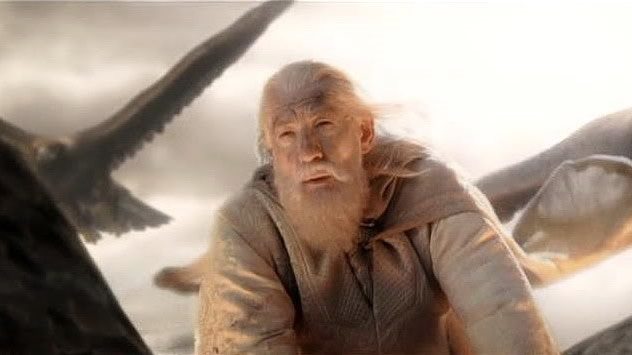
The Lord of the Rings trilogy features, more or less, two hobbits venturing into dangerous territory to throw a ring into a volcano. Once the deed is done, they are saved right in the nick of time by Gandalf riding giant eagles. This made many fans wonder, “Why not just use the Eagles in the first place?”
Many Tolkien fans have longed decried this as a major plot hole, but one movie theory suggests that this might have been Gandalf’s plan all along. According to it, the fellowship was headed to the Misty Mountains, where the Eagles live, before the wizard fell in combat with the Balrog.[4] His last words were even, “Fly, you fools!” which, according to the theory, were meant to be taken literally.
Gandalf didn’t tell anyone of his plan beforehand because he was afraid of spies. He didn’t seek the help of the Eagles later when he returned as Gandalf the White because he suffered from amnesia. By that point, nobody knew exactly where Frodo and Sam were, anyway.
Not everyone approves of this theory, including actors Elijah Wood and Sean Astin, who played the two hobbits. However, not even they can outright disprove it. Wood simply felt that this version “wouldn’t make for a very big story,” while Astin opined that the Eagles were “somehow” only able to come to Mount Doom after Sauron’s destruction.
6 Agent Smith Is The One
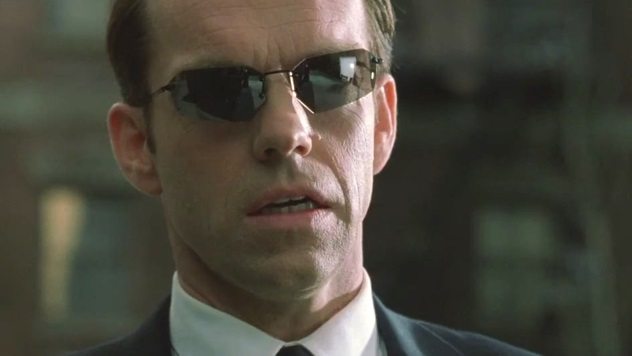
The Matrix was a landmark film which presented our reality as a computer simulation used by machines to control the human population. It was a hit with critics and the public, who enjoyed both the stylized fight sequences and the philosophical connotations.
At the heart of the story was the One, an entity with extraordinary abilities both in the Matrix and the real world, prophesied to bring about the destruction of the simulation and the freedom of humanity. As most viewers saw, the One was Neo, played by Keanu Reeves. However, some spotted an alternative possibility where the One was actually Neo’s archnemesis, Agent Smith.
The theory starts from the premise that a character doesn’t have to be the One willingly. To fulfill the prophecy, Agent Smith plays just as much a role as Neo. Furthermore, since the two eventually fuse together, Smith also joins with the Source, which is the stated goal of the One. In this version, Neo acts simply as a conduit for Agent Smith to fulfill the prophecy as the One.[5]
5 Stan Lee Is Uatu The Watcher
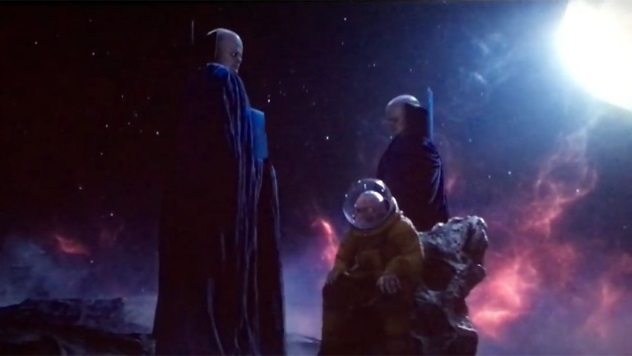
Fans of Marvel movies have become accustomed to two traditions: post-credits scenes and Stan Lee cameos. The man who was the face of Marvel Comics and helped create some of its most recognizable characters has appeared in all of the movies in the Marvel Cinematic Universe in small, humorous roles, such as a military vet drunk on Thor’s liquor or the Fantastic Four’s mailman. One theory states that Lee is playing the same character in all cameos and that he’s not just some random guy; he is Uatu.
Uatu is an alien, part of a highly intelligent, highly advanced race called the Watchers. As their name implies, their role is to simply observe lesser worlds. Uatu’s designated region is our solar system, which he has observed for billions of years. The Watchers vowed never to interfere again after gifting atomic energy to a planet which subsequently destroyed itself with nuclear war. Despite this, Uatu has, on occasion, broken his pledge and intervened as he grew fond of his new home and the life-forms which inhabit it.
The theory, which has been around for years, recently received an official endorsement from Marvel Studios president Kevin Feige.[6] Moreover, it’s been teased in Guardians of the Galaxy Vol. 2, where Stan Lee’s cameo consists of him telling stories of his adventures to Watchers on a distant planet. In the credits, he is listed as “Watcher Informant.”
4 Legalized Gambling Ruined Gotham City
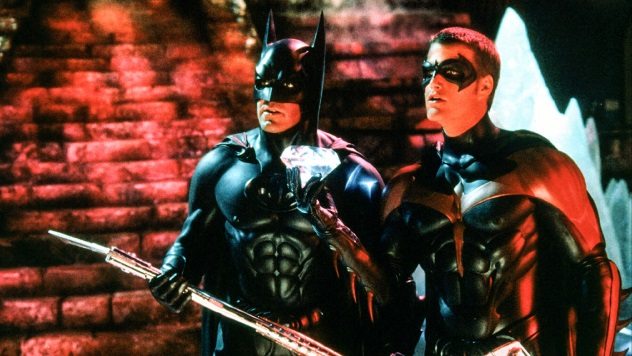
The 1990s Batman film series was somewhat of a mixed bag. The first two movies, directed by Tim Burton and starring Michael Keaton as the Caped Crusader, did very well both critically and financially. Afterward, Joel Schumacher took the helm, and the franchise saw a change in tone and a serious dip in quality. The director even went as far as apologizing to all Batman fans for the abysmal Batman & Robin.
Gotham City underwent a serious makeover in Schumacher’s movies. While Burton’s city was dark and desolate, the new Gotham was an explosion of bright neon lights and giant statues. In the real world, this is simply explained by swapping the director with someone with a different style. But in the world of Gotham, what could have prompted this change? According to some fans, it was legalized gambling.
They believe that legalized gambling turned Gotham City into a garish, Las Vegas–style tourist destination. The economy flourished, but everything became tackier—the landscapes, the villains, even Batman. That’s how they explain some of the more bizarre elements like the new Batmobile with flames, neon lights, and the Batman logo as well as the fact that the Bat has his own custom credit card. Batman morphed into Gotham’s mascot and became, more or less, a tourist attraction, a role he reluctantly embraced for the good of the city.[7] It still doesn’t explain why Batman’s suit had nipples, though . . .
3 Ferris Bueller Is Imaginary
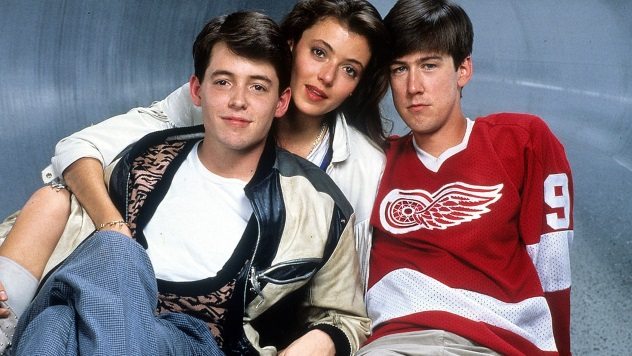
In 1999, Fight Club wowed audiences everywhere with its shocking twist ending. Tyler Durden, the anarchist soap salesman who organizes an underground fighting club and rallies members against corporate America, is revealed to be another personality of the reluctant, unnamed protagonist played by Edward Norton. The big reveal took almost everyone by surprise, but some later claimed that the premise might have been used 13 years earlier in Ferris Bueller’s Day Off.
Followers of the “Ferris Club” theory believe that Ferris Bueller is the imaginary friend of Cameron and represents an extension of his personality.[8] Ferris is daring, popular, and confident—everything that Cameron isn’t but wishes to be. All the interactions that take place between Cameron, Ferris, and Sloane happen in the former’s mind after he skips school and drives into the city in a fugue state. This all builds to Cameron taking out his aggression on the Ferrari and gaining the courage to stand up to his father.
2 George McFly Knew Marty Was His Time-Traveling Son

Admittedly, coming up with good fan theories for movies about time travel isn’t that difficult. In fact, there are quite a few about the Back to the Future franchise. One of them even tries to cover a huge plot hole from the first film.
Set in 1985, the movie sees Marty McFly travel back in time 30 years. There, he meets his parents, George and Lorraine, who were in high school. He briefly becomes his mother’s crush and his dad’s best friend before being the catalyst for them falling in love. Given the huge role he played in their lives, it’s bizarre that their 1985 counterparts wouldn’t recognize him as that kid they knew in high school.
According to this idea, George McFly did know but never said or did anything about it because he didn’t want to jeopardize his life with the woman he loved. While it’s impossible to say when he figured it out, Marty left a trail of anachronisms during his time in 1955, which George could have pieced together. These included making Star Wars and Star Trek references, singing “Johnny B. Goode,” using guitar techniques later popularized by Pete Townshend and Angus Young, asking for a Pepsi Free, and using the name Calvin Klein.[9]
As to why only George figured this out and not Lorraine or Biff, it’s because he is a massive sci-fi fan (and aspiring writer) and would be more open to the concept of time travel.
1 Kevin from Home Alone Grew Up To Be Jigsaw
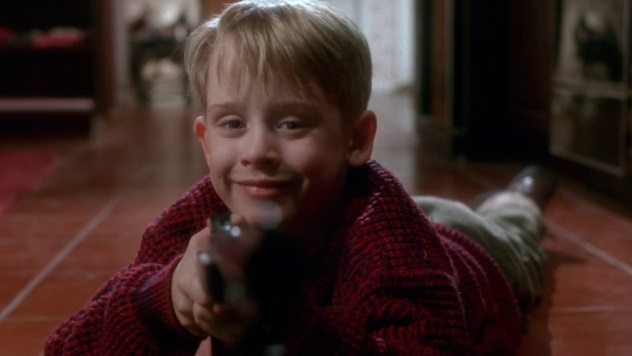
Released in 1990, Home Alone remains one of the most popular movies to show around Christmas. It shows the adventures of eight-year-old Kevin McCallister, who gets left behind accidentally when his family takes a trip to Paris. He gets up to shenanigans, as young boys are known to do, the most memorable being the foiling of two bumbling burglars using Rube Goldberg–esque homemade traps.
According to one twisted theory, Home Alone is nothing else than the origin story of John Kramer, aka Jigsaw from the Saw franchise.[10] It might sound ridiculous at first, but when you take Kevin’s actions out of the context of a family Christmas movie, they can portray a budding psychopath. He shows a proclivity for violent fantasies and voyeurism. He is prone to violent outbursts, like when his brother ate all the pizza. He shows a fascination with serial killers, specifically his neighbor Old Man Morley, whom he suspects of being the “South Bend Shovel Slayer.” He enjoys threatening and scaring the pizza delivery boy. He suffers from hallucinations, particularly the basement furnace. And last but not least, he is adept at building traps.
The theory then notes multiple similarities between some of Kevin’s pranks and Jigsaw’s murder traps. Most convincing is the furnace trap from Saw II. It’s located in a recreation of his childhood basement, complete with the furnace monster that young Kevin was afraid of.
Read more bizarre pop culture theories on 10 Wild Fan Theories About ‘The Lord Of The Rings’ and Top 10 Twisted Fan Theories About Children’s Movies.
